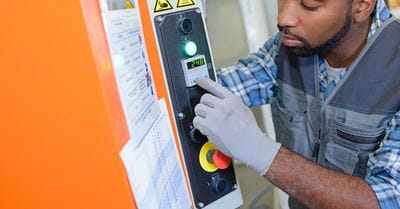Vertical Reciprocating Conveyors | Seattle

Raymond West supplies warehouse automation equipment such as VRC's.
We are among the largest suppliers of warehouse automation equipment in the state.
Call us today at (253) 333-2100.
What Is a Vertical Reciprocating Conveyor (VRC)?
A VRC is a safe, economical, convenient way to transfer goods from one elevation to another. VRCs have applications in countless industries, including factories, storage facilities, distribution centers, and other multi-story facilities. These adaptable pieces of equipment can easily be incorporated into a building’s basement, mezzanine, balcony or any higher story levels.
VRC’s consist of a column, a cage, and a hydraulic or mechanical system. Vertical material lifts can be installed almost anywhere inside or outside of a structure. Barriers and enclosures surrounding a VRC shaft keep workers safe and prevent accidents.
What Are Some Advantages of VRCs?
Safety: Many operations are dependent upon forklifts to move their materials and merchandise from one level to another. While ideal for moving many different materials, lift trucks are mainly intended for the horizontal transport of goods. To save time and effort, employees may occasionally stretch their lift trucks above their height limit or transport goods in excess of their truck’s capacity rating. When such infractions occur, the chances of a serious accident multiply.
For some vertical transport of goods between levels, vertical reciprocating conveyors provide a safe and efficient replacement for lift trucks. Specifically designed and fabricated for each facility’s application demands, VRCs significantly minimize the possibility of human error.
In addition, VRCs are built to move heavier loads more often. These more rapid throughput rates mean less labor expenses. For operations that have routine vertical lifting requirements, VRCs can enhance safety and decrease labor expenses.
Customization: One major benefit to VRCs is the degree to which they can be customized. Since standard elevators are designed to safely move people, regulations have been put into place that constrain the weight capacity, speed and size of these machines. Although such safety measures are necessary and advisable for safely transporting humans, they are inhibitive for high volume movement of goods in production facilities, storage facilities and distribution centers. Vertical lifts can be freely customized due to the fact that they are not subject to the same rules as passenger lifts.
Regulation: VRCs are built to move freight only, while standard elevators are built to move both passengers and freight. Due to this fundamental difference, VRCs are free from the rigorous elevator rules in many states.
On the contrary, VRCs are regulated by their own national code that is administered by the American Society of Mechanical Engineers (ASME), one of the original standards establishing associations in the nation. More specifically, vertical reciprocating conveyors must comply with ASME’s Safety Standard for Conveyor and Related Equipment (ASME B20.1-2018). This standard outlines the requirements for the fabrication, installation, operation and servicing of conveyor systems.
Raymond West Is A Full Service Supplier of Vertical Reciprocating Conveyors
If you’re in the market for a VRC, have questions or require engineering assistance, Raymond West can help. Our material handling experts can help plan, procure, set up and service a system that’s right for your business. Call us today!
Raymond's Seattle service operation includes most of Western Washington, including Seattle, Bellevue, Kirkland, Redmond, Bothell, Woodinville, Lynnwood, Everett, Tukwila, Renton, SeaTac, Burien, Kent, Federal Way, Fife, Sumner, Auburn, Tacoma, Lakewood, Puyallup, Olympia, Lacey and surrounding areas.
Raymond West | Seattle Material Handling Equipment Supplier
6607 S 287th St
Auburn, WA 98001
(253) 333-2100

